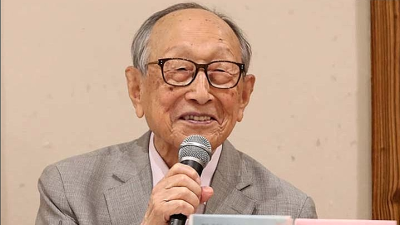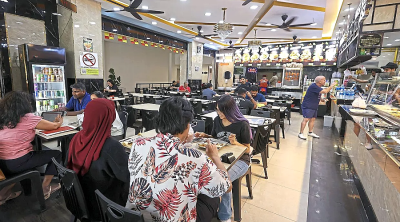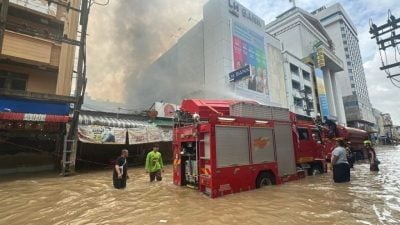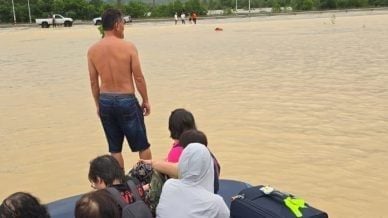
From Suvarnabhumi Airport, getting to the city is a breeze, especially with the robust air-conditioning inside the Airport Rail Link, which takes under 30 minutes to reach the centrally located stations of Makkasan or Phaya Thai.
Once you exit the train, however, you begin to feel the high temperatures that Bangkok has been notorious of late, especially during the recent heat wave.
Although I still stuck to my plan of taking the 15-minute walk to my hotel, part of me wishes that I just took an additional train ride—or even taking GrabBike: a fast and cheap option to cut through the traffic, albeit reminiscent at times of a roller-coaster ride.
“It was worse in April,” Kritaya Sreesunpagit—my Equity Initiative colleague and a native of Bangkok—told me, recalling the days when the mercury broke past 40 degrees Celsius, and hovered in the high 30s.
“But it’s still very hot nowadays, and it feels hotter than before.”
Having grown up in the tropics; having spent a big part of my life in Manila, I know what the noxious combination of heat and humidity feels like.
When I was in medical school, I stayed in an old dorm-style house in Malate, which had no air-conditioning.
Despite being habituated to tropical heat, however, I think I’m inclined to agree that heat today feels worse, if not in Bangkok, then at least in Manila.
The main suspect, of course, is climate change, and there is strong empirical evidence furnished by scientists not only that our planet has truly warmed, but that this warming is caused by humans.
Ominously, the World Weather Attribution group has found that climate change has made heat waves in the region “30 times more likely and much hotter,” and specifically for the Philippines, the heat wave “would have been impossible without human-caused climate change.”
But beyond global warming, the heat in the region’s cities is exacerbated by what scientists have called “urban heat island effect,” or the additional heat from urban surfaces (e.g., concrete) as well as waste heat (ironically, for instance, from air-conditioning).
Such is the impact of this phenomenon that a World Bank report estimates that cities in Indonesia, Malaysia, and the Philippines are up to 6.6 degrees Celsius hotter than surrounding rural areas, further worsening the quality of life among the urban poor, many of whom have no choice but to endure the heat.
As temperatures cool down a bit, it is easy to move on from this concern but we do so at our peril, given the high likelihood of more—and worse—heat waves in the years to come.
To counteract the urban heat island effect and mitigate its consequences, we need to go beyond individual-level actions.
These actions—like drinking enough water to avoid dehydration or avoiding the midday sun—are surely warranted, but they place the burden on individuals and do not solve the problem.
Some of these actions, too, are not an option for many individuals (how do you avoid the heat if you’re a construction worker?), making heat a matter of climate injustice.
One clear pre-condition to bearable urban life, in this time of climate crisis, is the availability and accessibility of public green spaces.
In Bangkok, the numerous elevated walkways can make walking tolerable even in the midday heat, and parks like Lumpini and Benchakitti are recreational oases that allow residents and visitors alike, to have a place for daily exercise.
In Manila, there are pockets of greenery but they are mostly in elite subdivisions and universities; even Bonifacio Global City and Makati can be hardly called “green,” and elevated bike lanes and walkways in Edsa remain a pipe dream.
Easy access to green (and blue) spaces outside the city should also be part of our hoped-for inclusive infrastructure. Manila is actually blessed with nearby mountains—including in the Sierra Madre—but they are hard to get to, and require all kinds of registration and guide fees, severely limiting their benefit.
Beyond lowering the temperature, such spaces offer so much benefits for physical, mental, and social health, which is why we need more trails, bike lanes, and parks.
Aside from promoting urban greening, the WB report also recommends various steps including cooling city spaces through wind, shade, and urban design, engaging building owners in tackling indoor heat, and protecting heat-exposed workers.
At a more fundamental level, of course, this should be part of the broader agenda of improved housing, public transport, educational facilities, and labor environments. Conversely, this “heat crisis” should make action on these realms more urgent.
Thankfully, beyond the oft-invoked model of Singapore, cities like Iloilo, Melaka in Malaysia, and Hue in Vietnam are demonstrating that it is possible to take steps toward greener and more sustainable urban futures.
As these cities show, it is not too late to prevent our region from becoming an archipelago of “urban heat islands” where people live in miserable heat—or unsustainable air-conditioned bubbles.
ADVERTISEMENT
ADVERTISEMENT








































